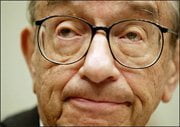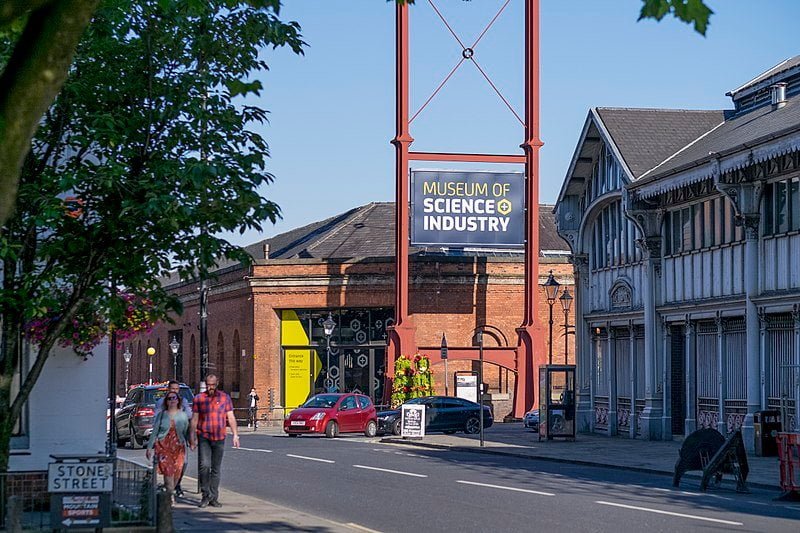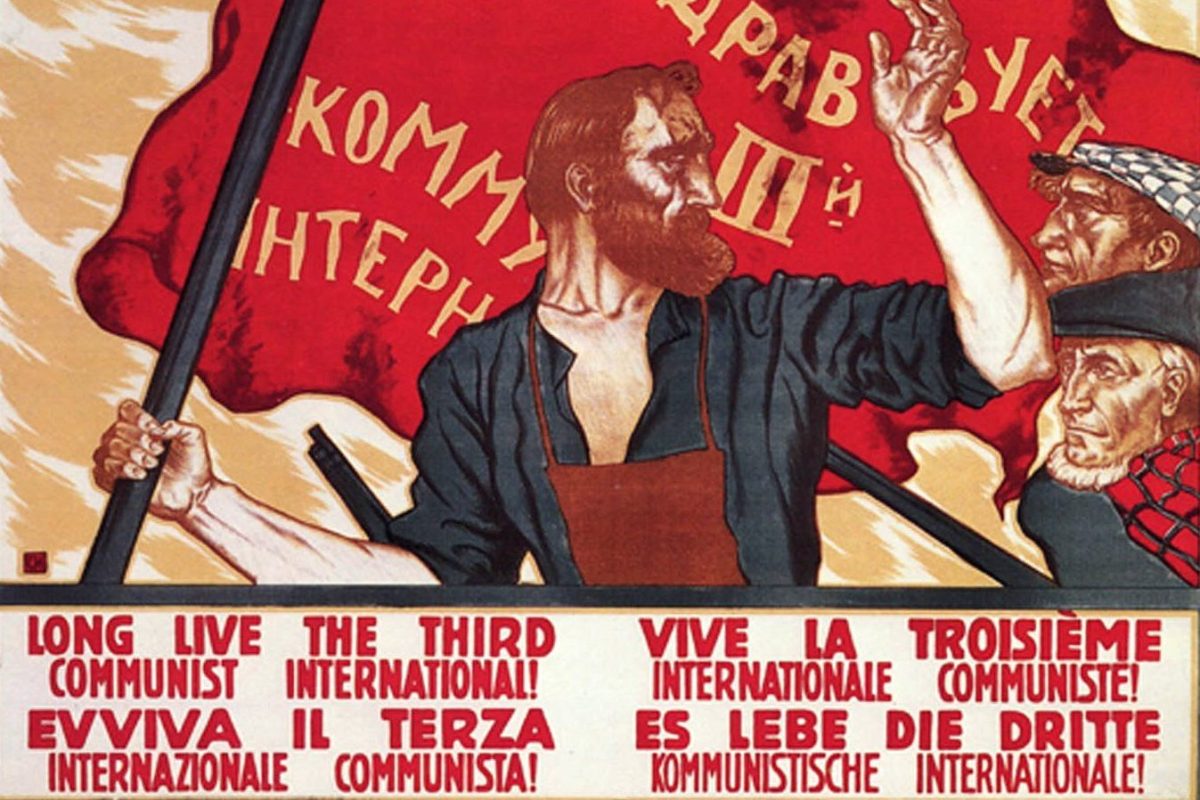Alan Greenspan has just turned 83 years old. He was Chairman of the US Federal Reserve Bank for over 19 years before he stepped down in January 2006, just before the great boom turned into the awful credit crunch and brought global capitalism to its knees.
Greenspan presided over the biggest credit boom in capitalist history and the largest rise in property prices that the US had ever seen. He was praised to the heights during those years and as the helmsman of capitalist success globally and in America. Bob Woodward, one of the journalists who exposed the Nixon Watergate scandal back in the 1970s, wrote a book about Greenspan in the year 2000, in which he described him as ‘the maestro’.
Back then, Greenspan claimed the hi-tech and internet revolution of the 1990s set the scene for an uninterrupted period of economic growth for capitalism based on increased productivity from new technology. But then came the so-called dot.com bust in 2000-2001, when thousands of tech companies went bust and stock markets collapsed (they have not returned to the levels of 2000 even now).
Then Greenspan described the booming property market of the early 2000s as an exciting way to expand the economy and the new forms of credit like derivatives that it engendered as wonderful innovative instruments to reduce risk and boost growth. Then came the property bust of 2007 onwards and the biggest credit crunch in human history. It’s not a great track record.
Over the Easter weekend, Greenspan was interviewed on the US cable TV business channel, CNBC, about why the great boom turned into the biggest economic slump for capitalism since the Great Depression of the 1930s. He said it was not because he and other bankers who ran the citadels of finance capital were stupid.
That conclusion was in sharp contrast to the answers that the top bankers in Britain gave to the House of Commons Select Committee. When they were asked what went wrong, they said it was a financial tsunami that came from nowhere, that nobody could have predicted, a one in a billion chance – not their fault.
Greenspan differed. It was not because the bankers were stupid; “they knew what was going on; it’s just that they thought they could get out before everything came to an end”. As Chuck Prince, the head of the now bankrupt US investment bank Bear Stearns said at the time: “we know the party will come to an end, but while it lasts, we have to keep on dancing”.
Capitalism and human nature
Greenspan argued that what brought everything down was sheer greed. The bankers knew they were being reckless; they knew that what goes up must eventually come down. But they just went on because they had to make more and more money for their shareholders and for their bonus payments. Greed was the driver. But Greenspan said greed is ‘human nature’, so this boom and bust will happen again some time in the future.
There we have it. For Greenspan and the ideologists of capitalism, it is ‘human nature’ that caused the crash and the slump, not the particular form of social and economic organisation that he operated under and supported. Human beings can be ‘greedy and selfish’ and they can be ‘cooperative and selfless’. It depends on the circumstances. Capitalism is a system of production of goods and services for profit; it is built on competition, on the drive to make more money (not things or services people need). It is a system designed to promote greed and selfishness. The ‘human nature’ that Greenspan blames for the economic crisis is nothing more than the human nature required to survive in the capitalist system.
The booms and slumps of the global economy began with capitalism. In a recent study by Carmen Reinhart and Kenneth Rogoff of the US National Bureau of Economic Research (NBER) on banking crises, they found that from the very early beginnings of capitalism up to the present day, there have been booms and slumps brought on by the operation of a system of production based on profit, competition and private appropriation of value.
Reinhart and Rogoff concluded that, as capitalism spread its tentacles across the world from the 18th century onwards, so the frequency and scope of economic crises grew. Sure, there had been crises of production before capitalism, based on famine as harvests failed or due to conquests from foreign invasions. But economic crises due to the failure of money, credit and banks are uniquely capitalist.
According to the NBER, there have been 64 ‘official’ slumps in capitalist production since 1854 – ‘human nature’ is powerful, it seems. What a waste of output, economic resources and above all, what damage to people’s lives in the loss of jobs, homes, well-being and even early deaths that slump and economic depression bring!
Most important, Reinhart and Rogoff concluded that as capitalism was increasingly free from government regulation and control and became more ‘globalised’, so crises grew in number and impact. Indeed, this latest period of globalisation since the 1980s was not one of success in reducing booms and slumps, as the likes of Mr Greenspan and other capitalist economists have argued, but quite the reverse. The last 25 years have seen more financial crises that ever: in emerging economies (1980s and 1990s), Asia (1997-99), Japan (1990s), US loan companies (1990s); Nordic banks (1990s) and so on.
Capitalism and inequality
Alongside the waste of resources from capitalist slumps comes inequality and injustice. Branco Milanovic of the World Bank has analysed the level of inequality of income and wealth in the world of capitalism. In 2002, he found that if he divided the world’s population into three groups: those with incomes greater than the average income of Italians could be regarded as rich; those with incomes less than the poverty levels of the advanced capitalist economies could be considered poor; and those in between could be categorised as middle-class. Milanovic found that 78% of the world’s 6bn population were poor and 11% were rich, with another 11% being middle-class. In 2007, Milanovic redid his sums and he found that he had underestimated the inequalities. It really was a 20:80 split between rich and poor. Indeed, the top 10% of the world’s population had 39 times more income than the bottom 10% – and it was getting worse.
But nothing beats this current financial crisis, except perhaps the Great Depression of the 1930s. This credit crisis has triggered off a major slump in capitalist production.
As I write, all the capitalist economists are agreed that the advanced capitalist economies are in slump, with annual output after inflation falling by up to 5-6% across the board in 2009. In the less advanced, so-called ‘emerging economies’, the situation is even worse, with falls in production in newly converted to capitalism Eastern Europe likely to be over 10%, in Singapore and other Asian exporting countries even more.
How much longer?
The question now is how much longer the slump will last. The Great Depression was called that because the slump did not end after a year or so. It started in summer 1929 and continued through to March 1933 (43 months). Then there was a recovery for a while, lasting until May 1937, before the slump resumed. Only preparations for the terrible world war of 1939-45 and the temporary ending of much of the capitalist system of production cut across the slump.
Since 1945, the average capitalist slump has lasted ten months, a much shorter period than before. The NBER says that this slump began at the end of 2007. So already this crisis has lasted 16 months and will continue for at least double the previous post-war average. But will it be longer?
Most capitalist economists say no. They reckon that the huge bailouts of the banks and other financial institutions with taxpayer’s money, plus the massive expansion of government spending and tax cuts to ‘boost’ demand in the economy will turn things around.
But this will not provide a turnaround in profitability. Banks and businesses may get government funding, but you can lead a horse to water, you cannot make it drink. Not until profitability improves will investment start again; job losses stop rising; and house prices bottom. And for that to happen, capitalism needs to destroy more of the weak.
However, as I write, there is an air of optimism in the ranks of capitalist investors on the stock exchange. After reaching yet another new low in stock prices in March, the stock indexes have risen nearly 30% since as governments pile in public money, banks claim they are starting to make profits again; there is even talk of a ‘bottoming’ of the housing market in America and Britain; while China is supposedly about to renew its strong growth after a pause.
But this is more wishful thinking than judgement. I suspect that there are more shocks to come before we reach the bottom of this nightmare slump. The banks may be ‘saved’, but many businesses are set to go belly up this year and the jobless rate is nowhere near its peak yet. House prices still have further to fall and capitalist profits too.
And there is the payback afterwards. That’s likely to be so large as to keep capitalism comatose like a zombie for years ahead. The bailouts, of course, are socialism for the rich, while working people get capitalism for the poor in job losses, wage cuts, repossession of their homes and soon reductions in public services and higher taxes.
Gordon Brown, Barack Obama, and most of the political leaders of capitalism tell us that they are putting in such huge amounts of money to stabilise the capitalist system. For the moment, governments are increasing their debt and borrowing to take on the rotten debt of the bankers. They are paying for this borrowing by printing money (sucking funds out of thin air).
But there is no free lunch (except for bankers). Eventually, all this public sector debt (likely to hit 100% of annual output in the UK, the US and others) will have to be paid back or serviced with interest in perpetuity. That means higher taxes and reduced public services. It means pensions and benefits for the old, the sick, the carers and the unemployed must be massacred. Capitalism cannot be revived without the help of the state and that means at our expense.






